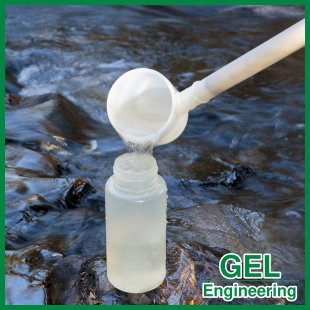Our Blog
PFAS Basics: What Every Industry Should Know

Perfluoroalkyl and polyfluoroalkyl substances (PFAS) are the latest chemicals identified as potentially harmful pollutants found in soil, groundwater, surface waters, and air across the globe. Much attention is falling on this newly recognized class of substances that are present in products ranging from consumer goods to industry-specific materials used in automotive, aerospace, construction, and electronics.
What are PFAS Chemicals?
PFAS, or perfluoroalkyl and polyfluoroalkyl substances, are a large, complex group of manmade chemicals composed of chain-linked carbon and fluorine atoms that form one of the strongest chemical bonds known in science. Due to their structure, PFAS substances do not degrade in the environment causing releases of these materials to result in the long-term presence in soil, surface water, groundwater, plants, animals, and humans. Today, research indicates that perfluorooctanoic acid (PFOA) and perfluorooctane sulfonate (PFOS) are the most prevalent PFAS chemicals in the environment. These substances are no longer manufactured; however, other types of PFAS substances are still manufactured and in use today.
PFAS History and Uses
PFAS substances were originally developed in the 1930s. Since that time, PFAS materials have been used in the manufacture of non-stick coatings, protective layers that resist stains, oil, and water, chemical resistant materials, firefighting foam, waterproof fabrics, resins, and insulating materials. The use of select PFAS in some products began to decline in the 2000s but many are still in use today. Common modern uses of PFAS materials include electronics components in cell phones and tablets, health care items used in hospitals like surgical gowns and drapes, food packaging, cosmetics and personal care products, automotive parts, and in a variety of industrial applications. The range of PFAS substances produced since the 1930s is believed to be greater than 4,000, with some estimates reaching over 10,000 chemicals and materials.

Why is the Environmental Protection Agency Concerned About PFAS?
Protecting human health and the environment is the mission of the United States Environmental Protection Agency (EPA). Potentially harmful toxins like PFAS substances become a focus for the EPA when the data suggests a correlation between exposure to the chemicals and negative impact on the environment and/or public health.
According to the EPA, PFAS substances are known to exist in the water, air, soil, and fish at sites worldwide. PFAS studies have shown the presence of these chemicals in the blood of humans and animals at low levels, and associations with human health problems, including cancer and reproductive issues, have been indicated. Studies are underway to determine the level of harm caused by PFAS and how to appropriately handle its presence in our environment. Future legislation is anticipated which will set acceptable limits for these materials in the environment.

How does PFAS Impact Human Health and the Environment?
The growing attention to PFAS compounds has driven these substances into the spotlight over the past few years. As more is known about PFAS substances, concerns about the persistent nature of the compounds have increased. PFAS substances are believed to be widespread and persistent in nature and the potential for these chemicals to bioaccumulate in humans, animals, and the environment is cause for concern. PFAS substances are also known as ‘forever chemicals’ due to their non-degradable properties. Human exposure to PFAS materials occurs through contact with soil, water, air, or products that contain the chemicals. Research into exposure routes and associated health risks is ongoing.
GEL is Here to Help You with PFAS Issues at Your Facility
If you are looking for assistance with PFAS, GEL Engineering is happy to help. Our environmental staff are ready to discuss your company’s potential for PFAS impact, answer your questions, and develop a plan to evaluate your process and property. Please email us at [email protected] to get started.
References:
“Perfluoroalkyl and Polyfluoroalkyl Substances (PFAS).” National Institute of Environmental Health Sciences, www.niehs.nih.gov. November 17, 2021.
“What are PFAS?”. Agency for Toxic Substances and Disease Registry. www.atsdr.cdc.gov. November 18, 2021.
“3M's Commitment to PFAS Stewardship.” 3M. www.3m.com.
“PFAS Explained.” United States Environmental Protection Agency. www.epa.gov.

